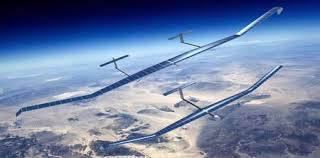The US Federal Aviation Administration (FAA) and National Aeronautics and Space Administration (NASA) have issued Version 1 concept of operations (Conops) for upper class E Traffic Management (ETM). The first draft of the Conops captures what the FAA, NASA and industry participants discussed in a series of meetings and exercises during 2019 at NASA Ames Research Center in California. The document, which was co-authored by FAA NextGen chief scientist Steve Bradford and Parimal Kopardekar, the director of the NASA Research Institute has been distributed to participants in the ETM initiative according to a report published in Air Traffic Technology International.
Managing air traffic above 60,000 ft is becoming more challenging as civil aviation long endurance balloons, high altitude fixed-wing aircraft, high altitude airships and supersonic transports enter operational service and join US military aircraft in the stratosphere, reports David Hughes. Upper class ETM also has to account for commercial space and other launch activities which transit the stratosphere on ascent and descent.
The Conops states: The ETM is largely a community-based cooperative traffic management system where the operators are responsible for the coordination, execution and management of operations with rules of the road established by the FAA. Operators share awareness of proximate operations and deconflict when necessary. ATC accesses cooperative and national airspace data to safely separate operations under their control.
According to the article, to date only the FAA and Canada have a defined airspace designated upper class E for altitudes at 60,000 ft and above. In the US, upper class E is above class A airspace (600ft to 18,000ft). New and innovative air vehicles will transit airspace controlled by the FAA using traditional air traffic management procedures during ascent to the stratosphere and for descent and landing.
The Conops envisions the operators of air vehicles using self-provided air traffic services or one provided by a network of third party service providers. ETM services may include flight planning, vehicle deconfliction, conformance monitoring and information on airspace constraints. ICAO is participating in the FAA/NASA discussions with industry. In the next phase of the development, the FAA and NASA will engage in ETM joint activities with Europe’s SESAR. There are several organisations active in Europe which want access to high altitude airspace including Thales, Airbus and the French space agency CNES.
(Image: Airbus Zephyr)
For more information visit:




